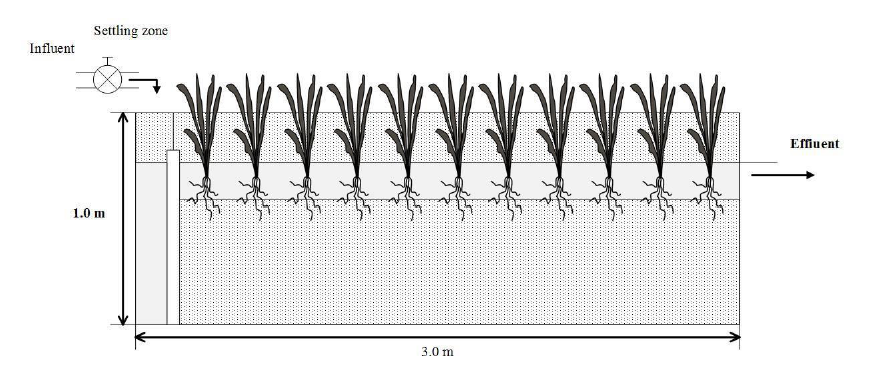Swine Farm Wastewater Treatment by Constructed Wetland Planted with Vetiver Grass
Main Article Content
Abstract
This research investigated the pollutant removal efficiencies in swine farm wastewater with Vetiveria zizanioides (L.) Nash (Sri Lanka ecotype) in a surface flow constructed wetland (SFCW). The SFCW units were set up to 3 treatments at 10, 15 and 30 cm water levels to find the proper depth for vetiver grass in wastewater treatment. The water quality indicator such as pH, temperature (T), biochemical oxygen demand (BOD), chemical oxygen demand (COD), total kjeldahl nitrogen (TKN), total phosphorus (TP) and heavy metals (Cu, Fe, Pb, Zn) were analyzed and compared with terms of removal efficiency. The 30 cm water depth has a better removal efficiency of organic substance treatment (BOD and COD). The BOD, COD, TKN and TP removal efficiency had no statistically significant differences between the water depths. TP has the best removal efficiency with average 95.18-96.53%. The treatment of heavy metals such as Cu, Pb, Fe and Zn with vetiver grass in different water depths was showed no statistical significance since it can reduce only a small number of these metals. However, the results showed that the effluent from all the treatment units contained averages of BOD, COD, TKN and pH that followed Thailand’s swine wastewater quality standard.
Article Details
Published articles are under the copyright of the Environment and Natural Resources Journal effective when the article is accepted for publication thus granting Environment and Natural Resources Journal all rights for the work so that both parties may be protected from the consequences of unauthorized use. Partially or totally publication of an article elsewhere is possible only after the consent from the editors.

